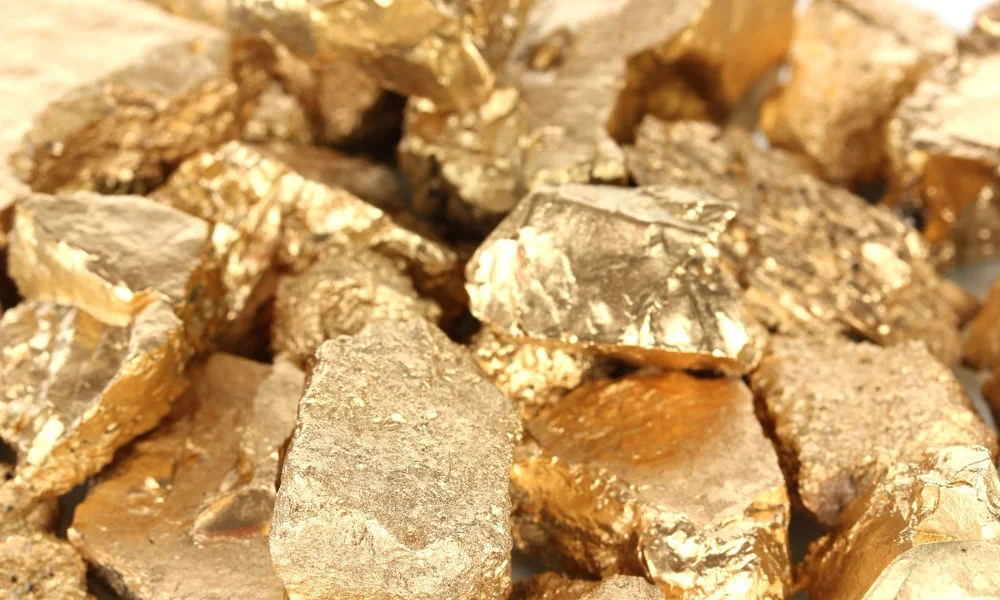Scientists explain how gold nuggets are formed
- September 3, 2024
- 0
Domestic gold deposits are mainly divided into quartz veins. They are believed to have been deposited from hot magmatic solutions coming from cracks in the rocks. However, the
Domestic gold deposits are mainly divided into quartz veins. They are believed to have been deposited from hot magmatic solutions coming from cracks in the rocks. However, the

Domestic gold deposits are mainly divided into quartz veins. They are believed to have been deposited from hot magmatic solutions coming from cracks in the rocks. However, the formation of large gold clusters is a mineralogical mystery. Australian scientists hypothesized that it is the piezoelectric properties of quartz that contribute to the formation of large deposits of the precious metal under the influence of frequent earthquakes.
Native gold deposits are found in mountainous regions around the world and are mostly associated with quartz veins, from which 75 percent of the metal is extracted.
During earthquakes, hot hydrothermal solutions (fluids) rise from cracks. The usual conditions for them in the Earth’s crust are temperatures between 200 and 650 degrees Celsius and pressures between one and five kilobars. For the formation of quartz veins, hundreds or even thousands of seismic events are required, creating a dense network of cracks in the rocks.
From a geochemical point of view, the process of gold deposition from liquids is well studied. The mechanism of solution infiltration into cracks is also more or less clear. However, the formation of large gold grains in quartz veins is a mystery.
The solubility of gold in liquids is one part per million (1 ppm). This means that to obtain 10 kilos of gold, you need to take 10 million kilos of water, the equivalent of five Olympic swimming pools. The paradox arises when you consider that the veins contain lumps of gold and quartz weighing tens and hundreds of kilograms (more than half of which are gold).
The concept of gold nanoparticles has been invoked as an explanation for overcoming the solubility limitation, but it is not clear what causes millions of nanoparticles to aggregate into a single gold coin.
Scientists from various scientific institutions in Australia, led by Christopher Voisey from Monash University, decided to understand this issue and turned to the piezoelectric properties of quartz. They presented their results in a journal article Nature Geology.
The solubility of gold in liquids is one part per million (1 ppm). This means that to obtain 10 kilos of gold, you need to take 10 million kilos of water, the equivalent of five Olympic swimming pools. The paradox arises when you consider that the veins contain lumps of gold and quartz weighing tens and hundreds of kilograms (more than half of which are gold).
The concept of gold nanoparticles has been invoked as an explanation for overcoming the solubility limitation, but it is not clear what causes millions of nanoparticles to aggregate into a single gold coin.
Scientists from various scientific institutions in Australia, led by Christopher Voisey from Monash University, decided to understand this issue and turned to the piezoelectric properties of quartz. They presented their results in a journal article Nature Geology.
Piezoelectricity comes from the symmetry of crystals. Quartz has no center of symmetry, so when the crystal is deformed the top and bottom halves acquire different electric charges and a voltage (proportional to the applied force) is generated between them. A quartz vein usually exhibits piezoelectric properties that increase in most directions of crystal orientation.
Scientists took samples from underground mine Fosterville In the Australian state of Victoria, he studied them using neutronography. They needed 12 quartz plates, half of which were for control. The samples were placed in a chamber with a gold solution and a linear actuator that simulated seismic waves of different frequencies. They experimented with various solutions in which the gold formed complexes with hydrosulfides, chlorides, or was in the form of nanoparticles.
A quartz crystal has a higher piezoelectric potential compared to the volume of the rock. Therefore, the highest potential within the quartz vein during seismic deformation occurs in perfectly oriented crystals, according to the authors of the new study. It works best when in contact with the conductive material gold.
As quartz veins grow, they are affected by thousands of aftershocks that accompany earthquakes. Even the slightest deformation of the crystal produces a piezoelectric potential, which contributes to the electrochemical deposition of gold from liquids. Gold nanoparticles are particularly keen to accumulate on the surface of the quartz crystal, which acts as an electrode.
According to the researchers, the things they describe can also occur in nature.
“This may explain the nucleation and growth of large gold nuggets in mountain ore systems, which differ from gold-bearing deposits of other origins, which have high metal content but do not contain large clusters,” the scientists explained.
The piezoelectric properties of quartz also explain the close association of gold formations along fractures in quartz veins. Since the piezoelectric potential is instantaneous and leaves no traces, gold particles appear to float in the quartz. The authors of the new scientific study believe they have solved the age-old “gold nugget paradox.”
Source: Port Altele
As an experienced journalist and author, Mary has been reporting on the latest news and trends for over 5 years. With a passion for uncovering the stories behind the headlines, Mary has earned a reputation as a trusted voice in the world of journalism. Her writing style is insightful, engaging and thought-provoking, as she takes a deep dive into the most pressing issues of our time.